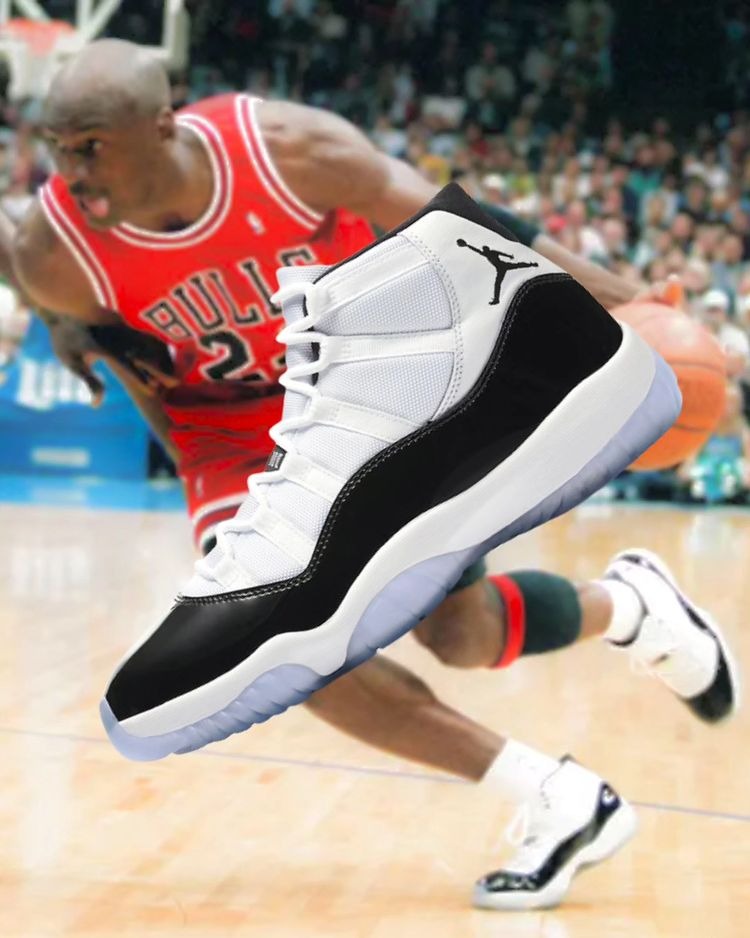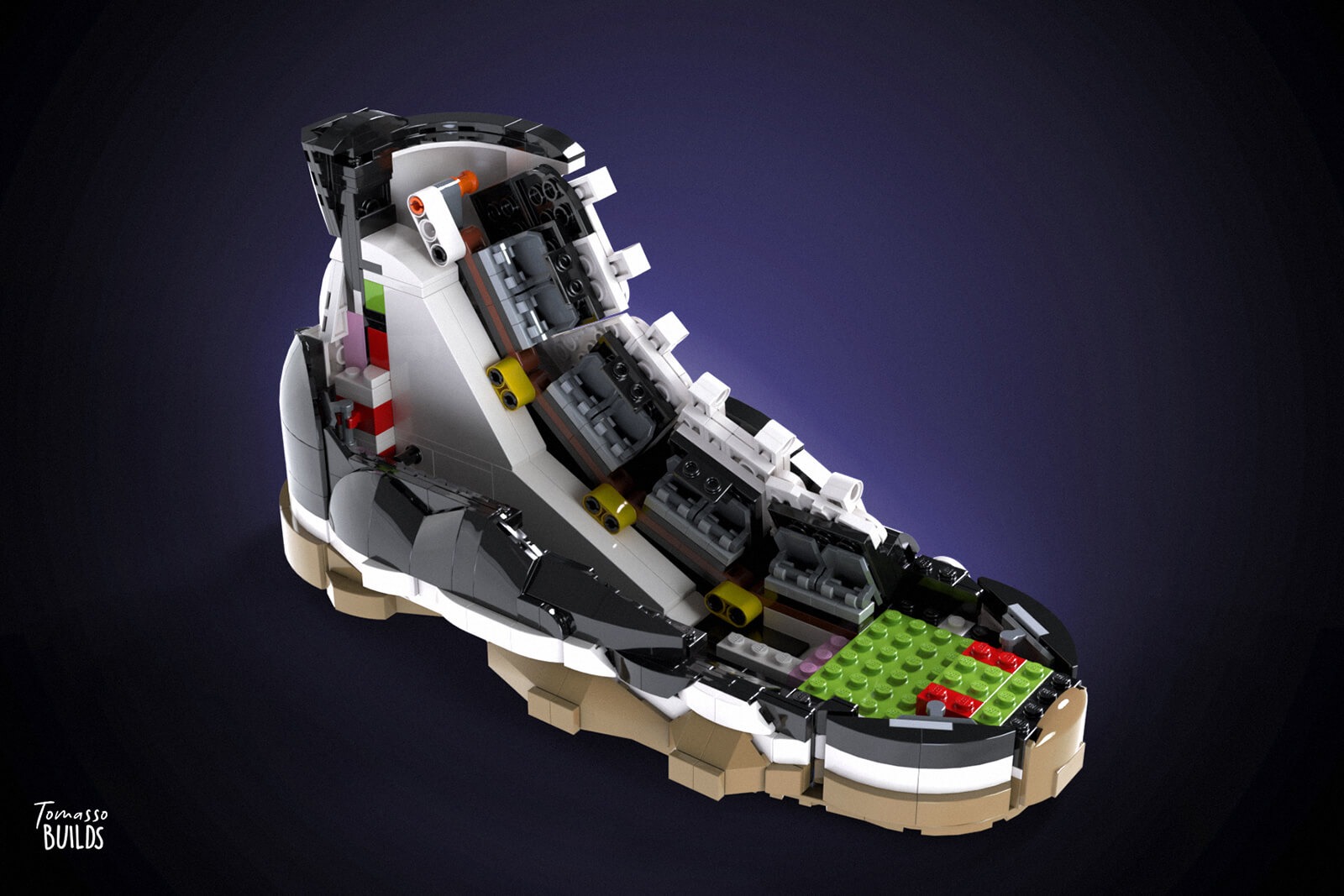Designed by Hungarian designer Tamás Borján who goes by the moniker Tomasso Builds, the LEGO set of Nike Air Jordan 11 is a tribute to the hobbyist’s particular fascination with the iconic sneaker. Describing the inclination that drove him to conceive the design, Borján tells STIR, “Basketball was always a part of my life, and basketball fashion is a style that I like to wear. I was always fascinated by the design of the Jordan 11. I love its shapes, lines, materials and the way that it looks so elegant and outstanding.” After designing the set, he submitted it to LEGO Ideas—a platform for fans to submit their concepts for a new product. After the product reaches 10,000 supporters, the LEGO expert team reviews the designs to decide if it can be released as an official LEGO set. The Air Jordan 11 idea has so far garnered close to 1200 supporters. Alongside this idea, Borján has designed another LEGO project, a functioning Pioneer CDJ 2000 Nexus, which is closer to becoming an official set with over 6000 supporters on LEGO Ideas.

The Jordan 11 ‘Concord’ has an intriguing story—its history coincides with one of the most determining careers of the basketball legend Michael Jordan. The player wore the sneakers throughout his monumental comeback season in 1995-96, after abruptly retiring from basketball to play Minor League baseball. He led the Chicago Bulls to his fourth NBA championship, bolstering the iconicity of the Jordan 11s. The sneaker’s debut was a symbolic act of defiance, as Jordan wore the shoe much before Nike wanted him to. It was banned by the NBA since it did not comply with the dress code, heightening its legendary status due to the incident being reminiscent of the Jordan 1s. Beyond a visual anomaly, as it was the first time a shiny material like patent leather was used in basketball shoes, the sneakers were performance-oriented, giving the wearer a competitive edge. The iconic patent leather accent is crucial to the shoe’s identity, while the material’s stiffness also adds to the structural integrity of the shoe. Unsurprisingly, the Jordan 11s are Michael Jordan’s favourite sneakers from the Air Jordan line. The Jordan 11s with a black upper featured in the 1996 film Space Jam. It was worn by none other than Jordan himself, earning the shoe a place in pop culture. Borján’s design remarkably showcases the fluidity and the futuristic flair of the shoe, capturing the essence of it with the assembly of the LEGO pieces.

Wanting to align the shoe’s design within an existing framework of LEGO, Borján borrowed the proportions of the existing LEGO Adidas Originals Superstar set. The designer figured that placing bricks with their tops (that have the studs) facing outwards allowed for many options to represent the detailing. The process proved to be quite challenging as a consequence of the use of many smaller parts since the designer wanted to maintain the original shoe’s elegant and smooth lines. Launched in 1977, the LEGO Technic was introduced to enable LEGO enthusiasts to build more complex and realistic models than ever before. The LEGO Technic sets include intricate pieces such as the NASA Mars Rover Perseverance, Bugatti Bolide and the Airbus H175 Rescue Helicopter. Since the shoe has a curvature towards the top and the middle, Borján used Technic elements to give it a curvaceous nature.

While describing the last leg of the process, Borján shares,” I tried to visualise the (ballistic nylon) material with 1 x 1 tiles that could differentiate from the lace holders. For the lace holes, I added bricks with Technic pin holes; it is the same approach that LEGO used with the Adidas Superstar. For the laces I had to add actual shoelaces which is also an approach LEGO has already used. The tongue is a long element that consists of several sections connected with clips to be able to give it a curve.” The set portrays the design intent of the shoe with the LEGO pieces fitted remarkably well, with the rand representing the black patent leather sharing a similar shine that was inherent to the original sneaker’s visual identity.

From revolutionising the toy industry to becoming a significant part of pop culture, the Danish company LEGO has transitioned from an entity to a medium of expression. With the malleability to be assembled into any form, its crafting potential was only confined by its user’s imagination. With the incredible number of possibilities created with its large array of individual pieces, LEGO as a product has gone beyond the building options recommended by the company. A considerable number of LEGO enthusiasts have assembled compositions that have garnered ample attention from the larger LEGO community. The LEGO Ideas thus becomes a platform for fans to share their concepts with the community, also allowing their work to become an official set if it garners adequate support. With enough support, Borján hopes for his design to become an official set, continuing to add to the ever-increasing ways of employing LEGO as a medium for making interactive collectables for enthusiasts.